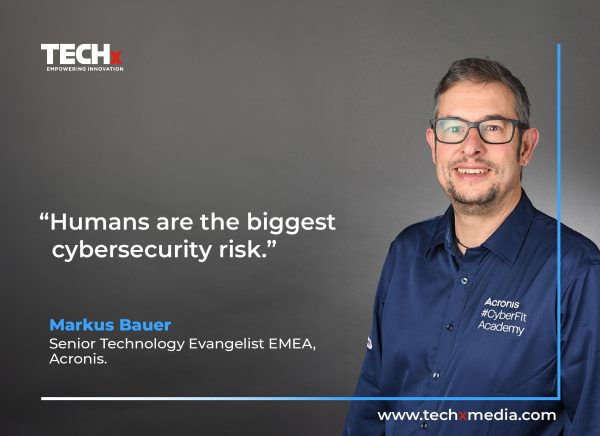
The ongoing digital penetration across various platforms continues to provide industries and entrepreneurs alike with unimaginable and, to a certain extent, unprecedented opportunities.
These disruptive innovations and technologies have kept enterprises connected in ways they never thought possible many years ago. From social media to eCommerce, remote and hybrid working to automation, technology advancements are single-handedly fueling the better part of day-to-day business operations. But here comes the spanner in the works!
The UAE is currently experiencing a surge in cyber attacks in the form of fraudulent websites mimicking official organizations or popular brands. For instance, a recent incident involved a Dubai resident losing Dh1,051 while attempting to recharge his Nol card with Dh30. While searching for the RTA website, he found himself on a site strikingly similar to the official platform. This subsequently led him to proceed in confirming his payment by providing the OTP from the payment window. Similarly, the websites of Global Village and the Museum of Future have also been spoofed this way to trick unsuspecting users into providing sensitive information to these phishing sites.
Another common scam that has been occurring is messages claiming to be from major postal and courier companies. These messages often pose as if the receiver’s package has been cancelled or delayed and provide a link to update their address or reschedule the delivery. Thereby, deceiving the user to follow phishing links and provide personal information, leading to loss of large sums of money from the victim’s bank account. Thus, these examples highlight the crucial need for increased awareness and caution among users.
As Middle East-based organizations and enterprises continue to embrace and adopt different digital revolutions in a bid to shore up their competitiveness with the rest of the world, the need to address cybersecurity challenges has now become of utmost importance.
The truth is, while technical measures and capabilities are crucial to digital security, it is the human factor that often serves as the weakest link in the cybersecurity chain. A survey by search engine giant Google discovered 13 percent of its users use the same password for every account while an additional 52 per cent use the same password on multiple email accounts. Put mildly, this is a recipe for disaster!
To put this into perspective, we must explore how employee training and awareness can play a pivotal role in enhancing cyber protection throughout the Middle East.
In the digital era, humans have increasingly become one of the most common weakest links when it comes to cybersecurity. Unfortunately, cybercriminals are now even more keen and are aware of this vulnerability. This has enabled them to frequently exploit the loophole through social engineering techniques, deploying tactics such as phishing emails, deceptive phone calls, and targeted cyberattacks.
According to the Acronis Mid-Year Cyberthreats Report 2023, the number of email attacks reported in 2023 has surged by a staggering 464 per cent compared to the first half of 2022. Notably, ransomware continues to be the primary threat to large and medium-sized businesses, including government, healthcare, and other critical organizations.
It, therefore, goes without saying that in the absence of a robust training and awareness program within the organization, employees can very easily and unknowingly fall victim to these tactics and inadvertently compromise sensitive and valuable data and systems. This is one of the reasons, Acronis is investing in its Academy and creates regular updated content.
Hence, fostering a culture of cyber protection awareness is a crucial step in fortifying the Middle East’s digital landscape. Similar to their counterparts across the globe, organizations and enterprises in the Middle East have a massive role to play in ensuring cyber safety. Education lies at the core of empowering employees to ultimately become the first line of defense against cyber threats. This can be achieved through investing in comprehensive cyber protection training programs.
Cyber protection training sessions should also cover crucial topics such as recognizing phishing, malware, and ransomware attempts, using strong passwords, secure browsing habits, and most importantly, regular software updates. This can be done through interactive training workshops and real-world simulations to demonstrate in real-time how employees can discern legitimate from malicious activities and enable them to make informed decisions that will ultimately safeguard their digital environments.
This way, organizations can ensure that their workforce is better equipped with the necessary knowledge, skills, and tools to identify and respond to potential risks early enough.
While cyber protection training is a key component of enhancing cybersecurity, it’s also insufficient without an ongoing awareness campaign that reinforces best practices. While regularly making the employees aware of the latest threats and trends, it is also important to consistently share practical tips and highlight success stories.
The main objective of doing this is to keep cyber protection at the top of the minds of the employees. Furthermore, promoting a sense of collective responsibility and ownership also ensures that every individual is brought on board and that they fully understand their role in safeguarding the organization’s digital assets.
Cyber protection is now a shared responsibility. This calls for renewed collaboration among various stakeholders within the organization, which is crucial for ensuring a robust defense mechanism.
This can be done by establishing strategic partnerships, sharing knowledge and insights, and coordinating tactical efforts that will ultimately and collectively combat the ever-evolving cyber threat landscape. Additionally, it is equally important to foster international collaborations that can facilitate the exchange of ideas, expertise, and best practices. This will, in turn, enable enterprises in the Middle East to fully leverage global experiences in boosting their cyber protection capabilities.
As the Middle East continues to increasingly embrace global digital transformation, the need for strong cyber protection measures becomes increasingly heightened. However, key decision-makers must prioritize and remember that technology alone cannot guarantee their safety. Understanding the role the human factor plays remains pivotal in building a resilient digital ecosystem in the region. It is through employee training and awareness that help these enterprises significantly enhance cyber protection throughout the continent’s digital landscape.